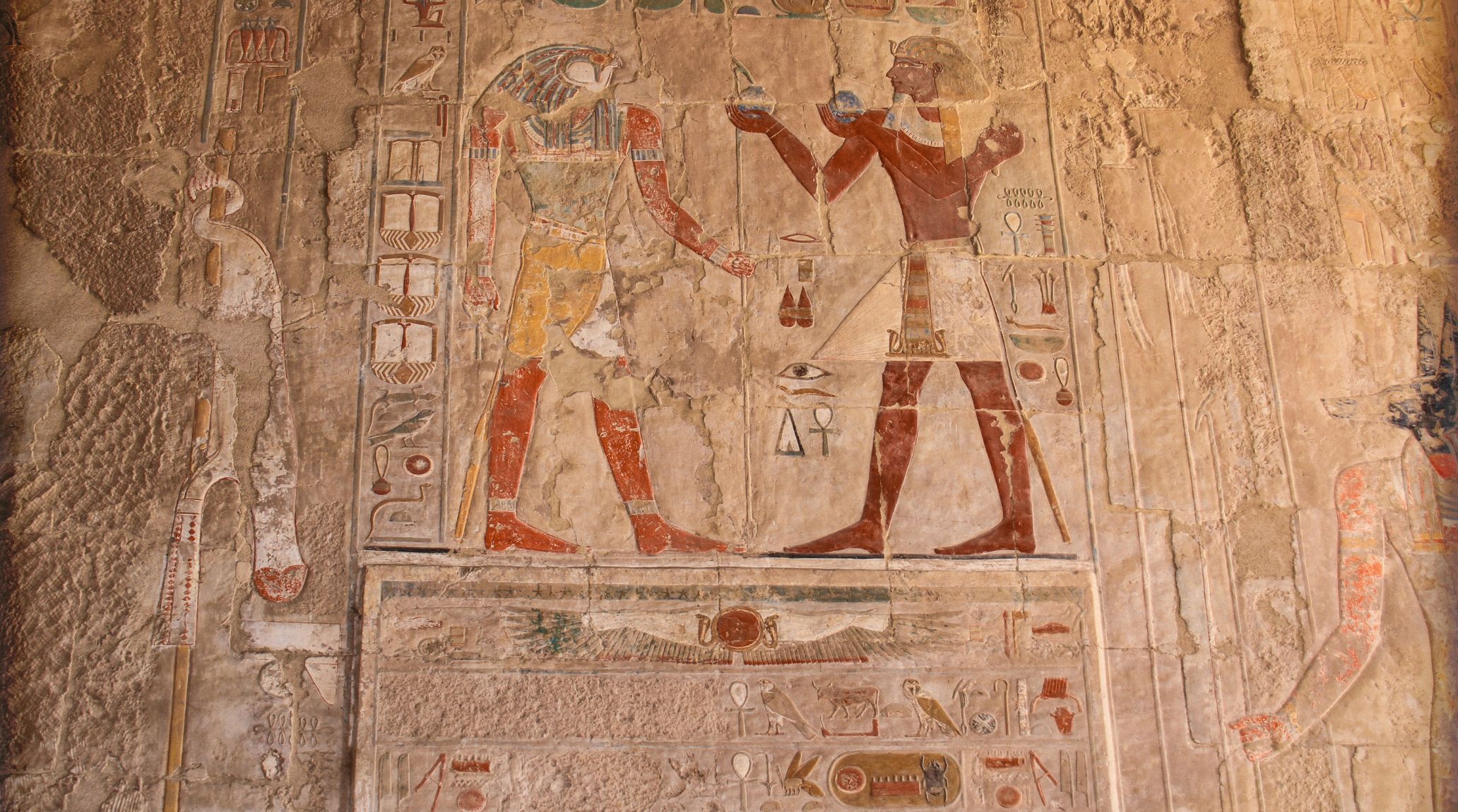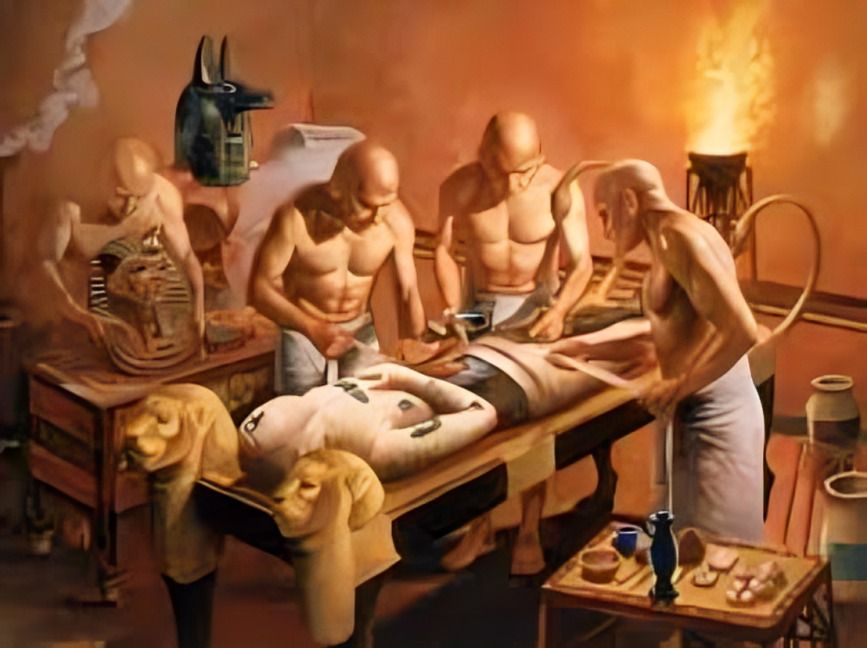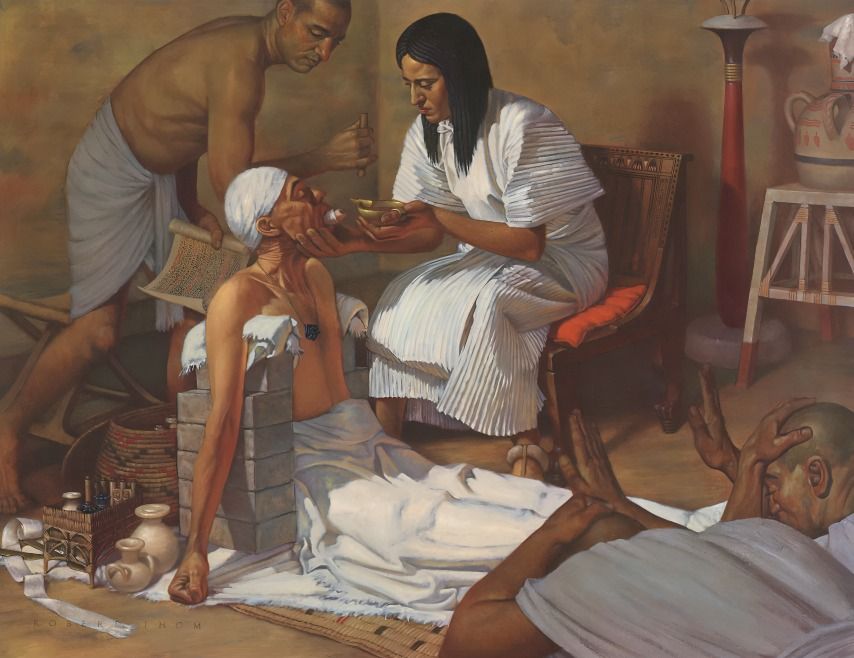
“
Medical practices in Ancient Egypt were both advanced and deeply intertwined with their culture and religion. In this article, we uncover 20 Intriguing facts about medical practices in Ancient Egypt, revealing the innovative techniques and beliefs that shaped their approach to health and healing.1
1
”
Amenhotep, the first known physician in history, lived during the 3rd dynasty over 5,000 years ago. Egyptians were highly skilled in treating various diseases, showcasing their advanced medical knowledge. 1

Mummification helped Pharaohs gain insights into the human body and organ functions. Historical records show that ancient Egyptian physicians understood the roles of organs like the heart, kidneys, pancreas, stomach, and lungs.
Ancient Egyptian medical practices allowed them to precisely locate and access infected organs. During mummification, they made a small incision on the left side of the abdomen to remove all the internal organs, a key step in the process. 2
Fossils from the tombs of Giza Pyramid builders highlight the advanced medical skills of ancient Egyptians. Over 4,500 years ago, Pharaonic surgeons expertly amputated infected limbs without harming other organs. 3

Peseshet was a distinguished female physician in ancient Egypt, known as the “Lady Overseer of Female Physicians.” She held a prominent role in overseeing the care provided by female doctors.
A 17th-century BC papyrus reveals the ancient Egyptians' expertise in surgeries, including those on the head, neck, shoulders, and chest. This document details how Pharaonic physicians successfully managed over 48 surgical cases. 4
A 19th-century BC papyrus from the reign of King Amenemhat III in 1825 BC details how ancient Egyptians managed obstetrics and gynecology cases. This text highlights their advanced knowledge in women's health. 5
The Ebers Papyrus, named after George Ebers who translated it, is the oldest known medical papyrus, dating back to 3,000 BC. This significant text lists over 400 medicines and details 877 methods for treating various diseases. 6
The ancient Egyptians developed their own medical prescriptions, utilizing various plants and herbs for treatment. For example, when patients had stomach or digestive issues, Egyptian physicians used aniseed as a remedy. 7
Ancient Egyptian doctors treated ulcers and other ailments using lichens. They employed lichens to address vomiting, stomach issues, and problems with the kidneys and intestines. 8
To treat hypertension, ancient Egyptian physicians recommended drinking hibiscus, which also served as a painkiller. They used flax seeds to treat injuries and ulcers.9
Pharaonic physicians were adept at managing complex conditions like diabetes, using onions to regulate blood sugar levels. For treating burns and wounds, they applied cactus as a remedy. 10
Ancient Egyptian physicians used figs to treat chest and skin diseases, applying them as a cream to affected areas. Figs were also used for heart and chest conditions. 11
Ancient Egyptians practiced dentistry, addressing common issues like caries and tooth decay. Remedies included cumin, incense, and onion for swollen gums, and possibly opium for pain. They drilled holes to drain abscesses but did not appear to extract teeth.12
Ancient Egyptian doctors believed illnesses were caused by gods, demons, or spirits blocking bodily channels. Healers, often priests, used spiritual and natural remedies such as incantations, amulets, and prayers to dispel these entities. 13
Ancient Egyptian physicians understood the pulse’s link to the heart but lacked knowledge of blood circulation, viewing the body as a system of channels centered around the heart. They believed pus indicated the presence of an evil spirit.14
Ancient Egyptian medical practitioners were called "wabau," meaning ritually pure. General practitioners were known as "swnw," while those specializing in magic were "sau." Dentists were rare, with Hesy-Ra recognized as the earliest known dentist. 15
Prominent ancient Egyptian physicians included Medunefer, Merit-Ptah (the first recorded female physician and scientist), Penthu, Qar, and Payeftjauemawyneith. Egyptian healthcare also encompassed midwives, masseurs, nurses, attendants. 16
The “channel theory” in ancient Egyptian medicine, shifted focus from purely spiritual to practical, natural treatments. Doctors believed that, like irrigation channels, bodily channels ensured health, using laxatives to clear blockages. 17
Ancient Egyptians practiced "simila similibus," using remedies that resembled the illness they aimed to treat, similar to modern homeopathy. For instance, ostrich eggs were used to treat fractures. 18


